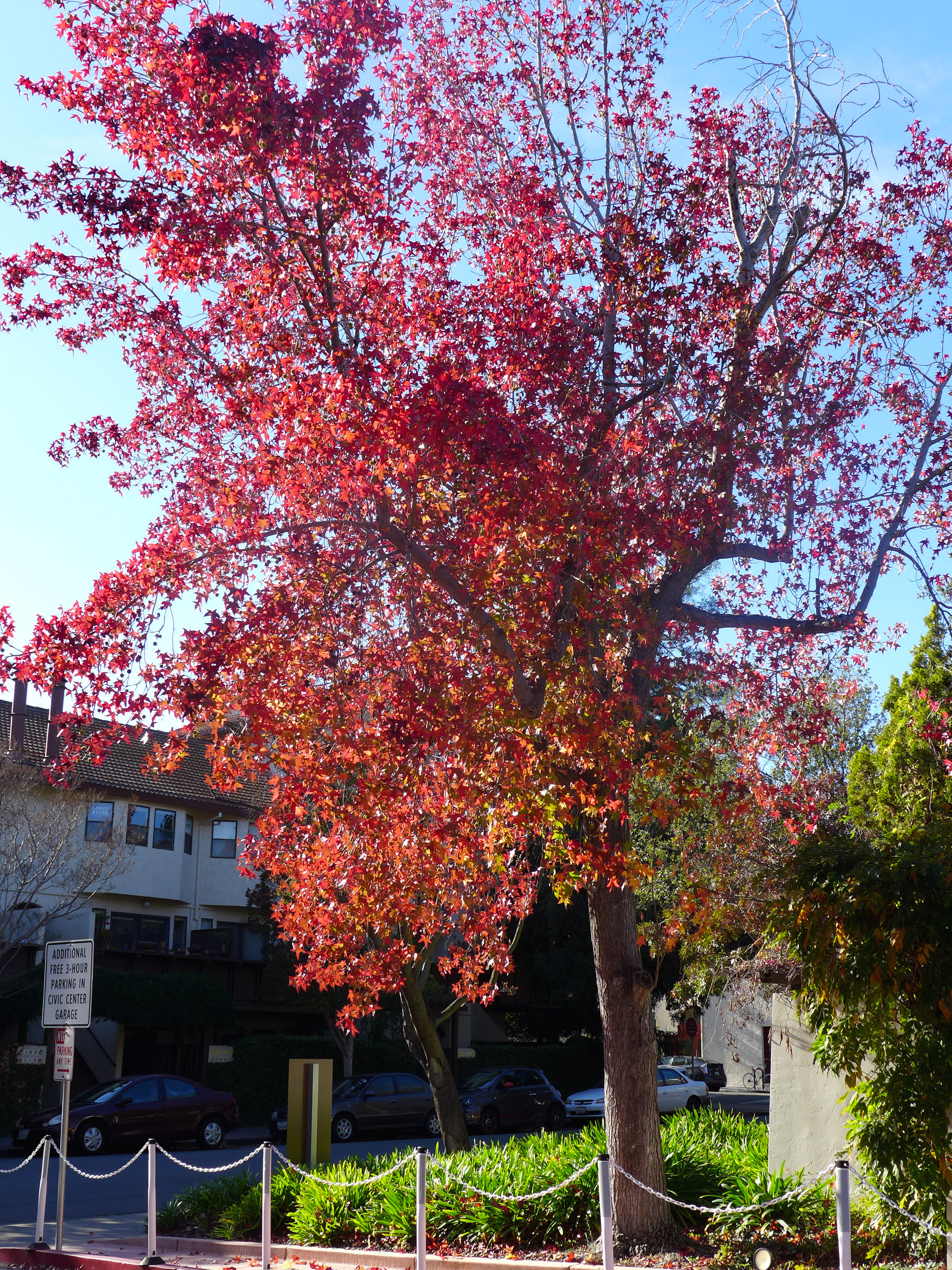- About Us
- Our Work
- Tree Info
- Get Involved
- Blog
- Support Us
By Canopy Team on November 7, 2016

In many parts of the United States, people are enjoying one of nature’s finest events – leaf color change that signals a tree’s response to temperature change and the seasonal bridge from summer to fall.
Throughout Silicon Valley, and especially in Palo Alto, the color-changing leaves make for a beautiful display on virtually every street.
Dave Dockter is a planning arborist with the City of Palo Alto. “This autumn has produced some of the best seasonal fall color displays,” he says, “beautiful color change is not an anomaly—it is a very systematic event. The tree is a living system.”
Every year, Dave compiles a list of must-see, fall color trees in Palo Alto. In anticipation of Canopy’s upcoming “Fall into Color” tree walk, Dave shared his five favorites of 2016 and where to find them:
Chinese Pistache (Pistacia chinensis): this stunning tree provides a festival of colors in scarlet, orange, and yellow.
Location: Cowper St, and Waverley St at Embarcadero

Maidenhair Ginkgo (Ginkgo biloba): this tree has spectacular canopy of golden, fan-shaped leaves.
Location: Greenwood Ave, as well as in the landscape of Genencor Headquarters Lobby at 975 Page Mill Rd

Liquidamber (Liquidambar styraciflua): these handsome trees boast a varied display of fall color.
Location: Palo Alto City Hall, and Page Mill Road between El Camino and Foothill Expressway

Shumard Oaks (Quercus shumardii): a common southeastern U.S. street tree, some of these oaks offer good fall color.
Location: Porter Drive at Page Mill Rd
Cimmaron Ash (Fraxinus pennsylvanica ‘Cimmzam’): this fast-growing ash has a brilliant display of glossy fall color.
Location: Alma St at Homer Ave

Click here for the complete map of fall color tree locations.
The leaves of deciduous plants, which can be thought of as small factories containing raw materials and sugars, begin shutting down for the year when triggered by cool weather.
As the leaf is slowly “abandoned” by the tree, green chlorophyll – the dominant chemical found in most leaves – is broken down and “recycled” by the tree. This process unmasks other-colored chemicals such as the more stable yellow to orange carotene.
The illustration below from Compound Colors, futher explains how carotenoids, flavoniods, and anthocyanins play a role in fall color leaves.
To learn more about the trees on this list, visit Canopy’s Tree Library.